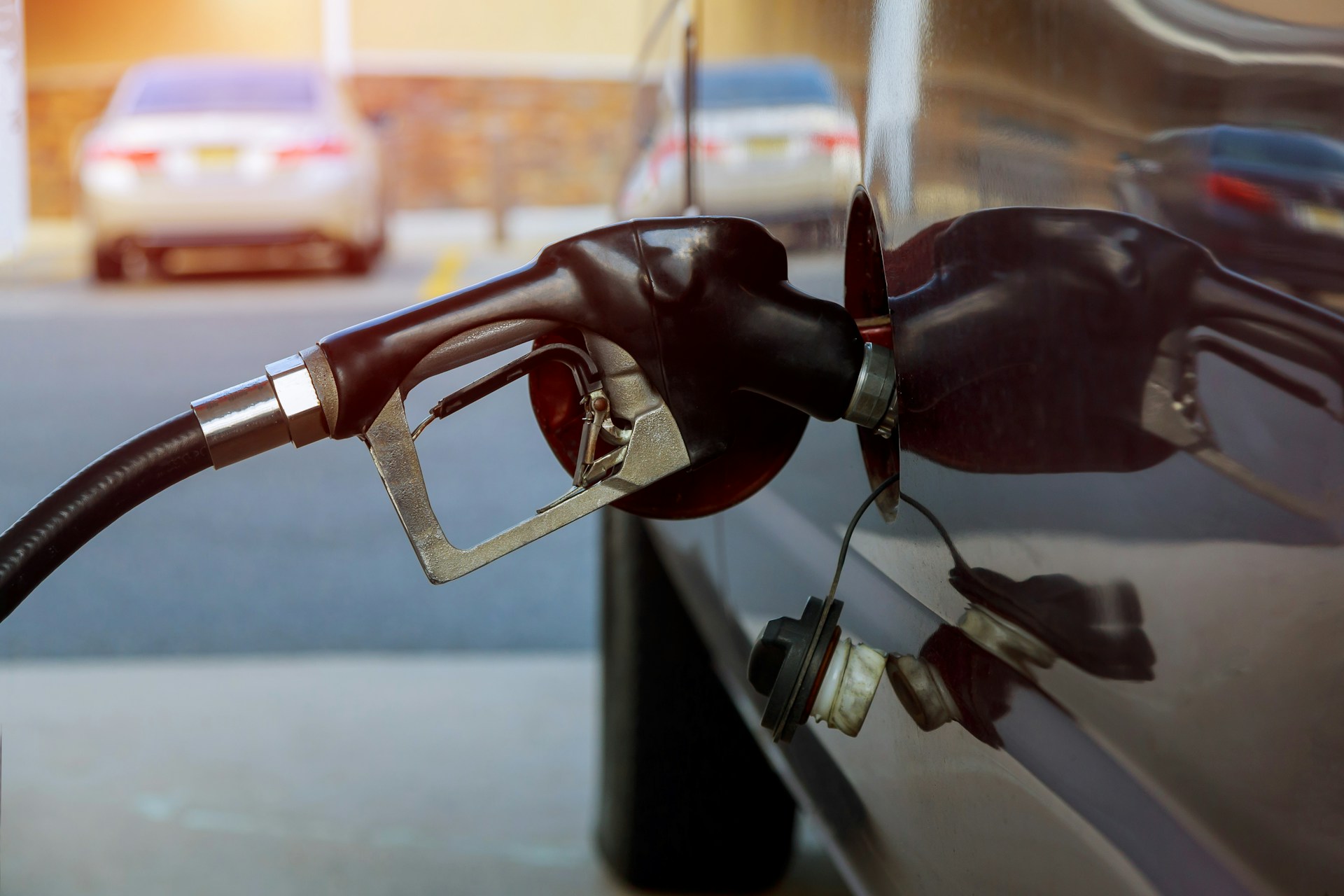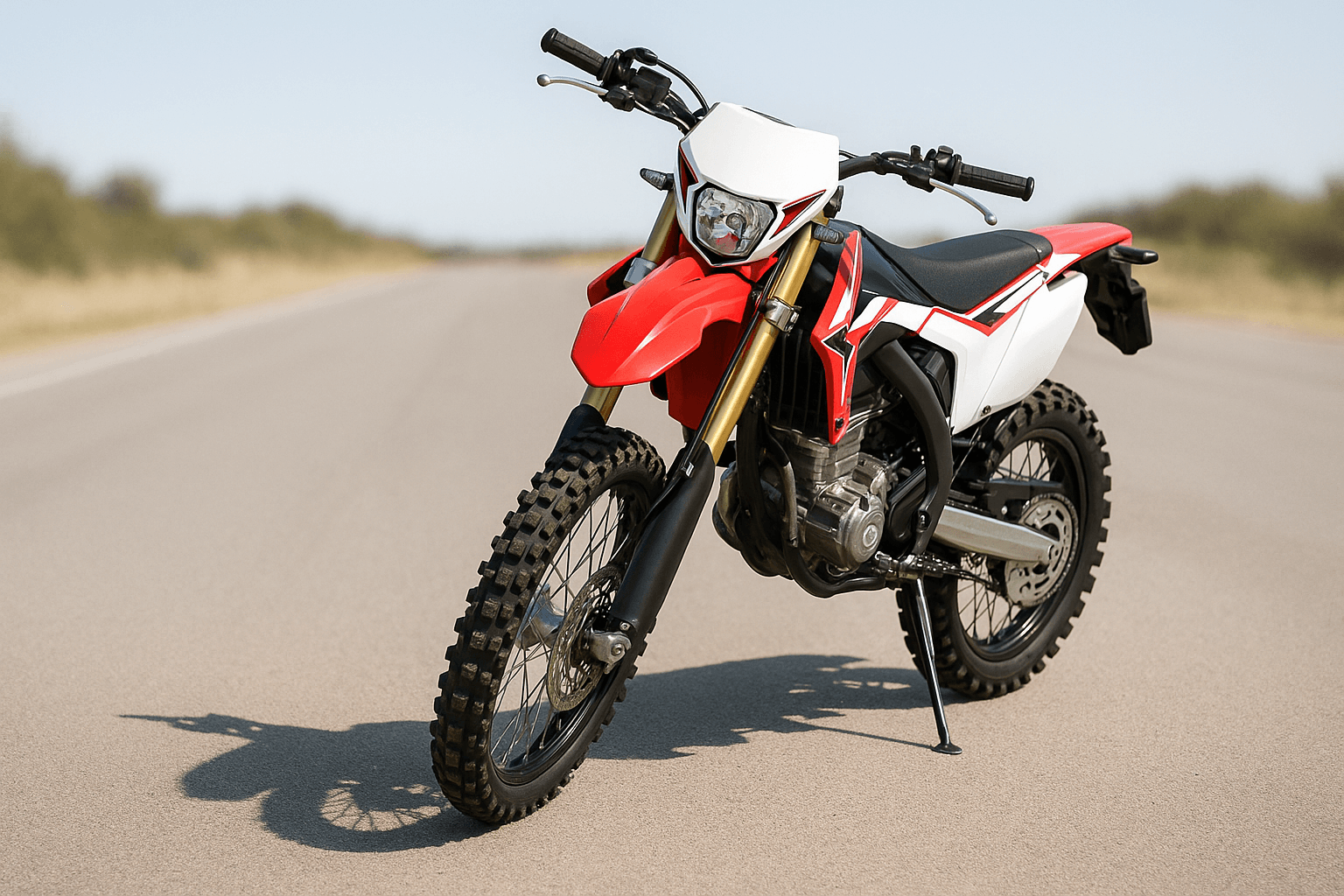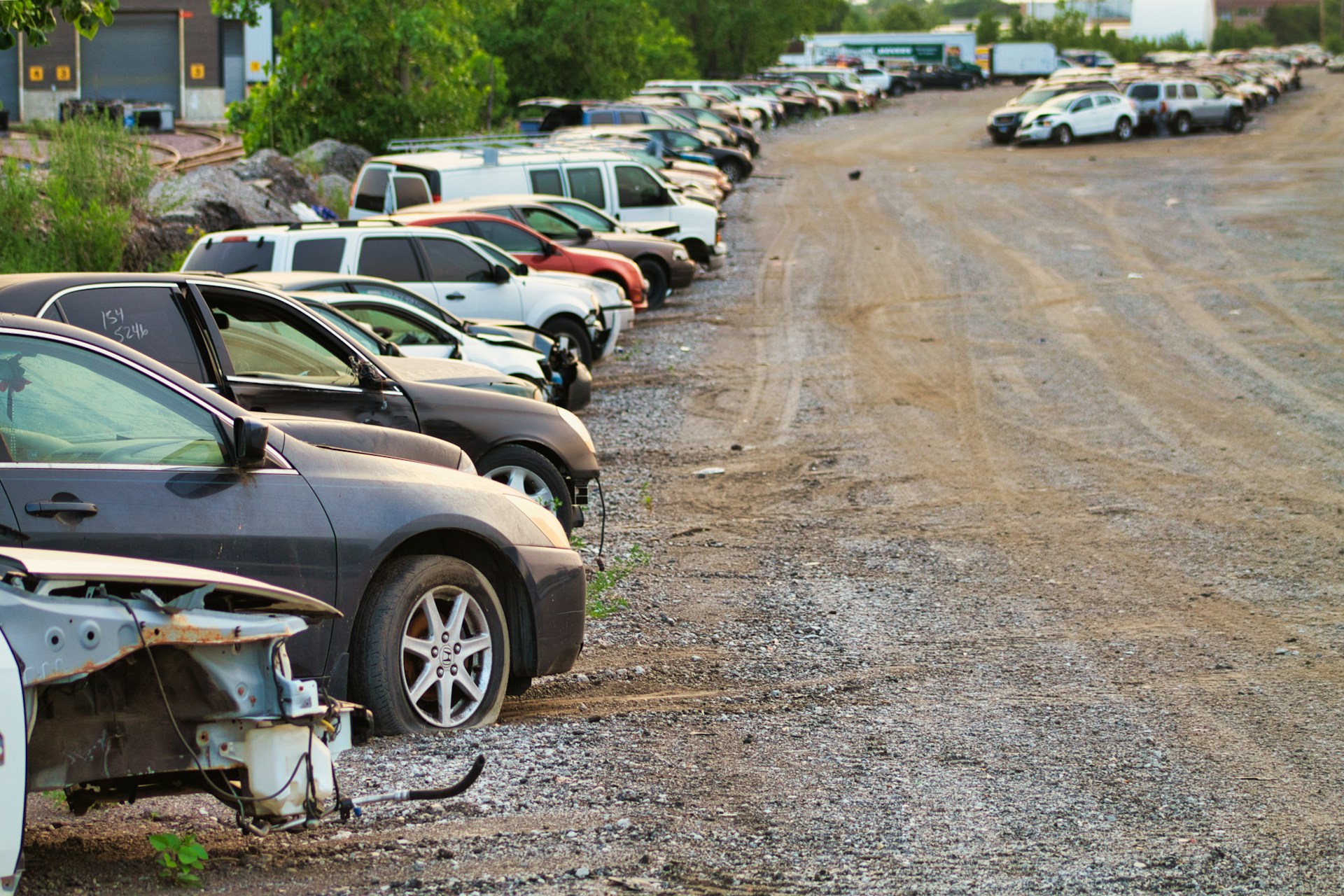Contents
The main difference between a moped and a scooter is the engine and speed. Mopeds have small engines (under 50cc), usually come with pedals, and go slower. Scooters have bigger engines, no pedals, and can go much faster. Knowing these differences helps you choose the right vehicle and follow the law.
What Is a Moped?
A moped is a low-speed motorized vehicle. It combines pedals with a small motor. Most mopeds feature smaller engines. They’re designed for short distances within urban areas. The pedal moped configuration allows riders to shift gears between motor power and manual pedaling.
- Engine size typically ranges from 50cc or less, with less power output.
- Maximum speed is usually limited to 28-30 mph due to speed limitations.
- Features pedals that can be used for propulsion assistance.
- Step-through frame design for easy mounting and dismounting.
- Automatic transmissions in most models eliminate manual transmission complexity.
- Requires minimal licensing in many states – some don’t need a moped license.
- Better gas mileage, often exceeding 100 mpg, with a small gas tank capacity.
- Lightweight construction with small wheels for maneuverability.
- Basic rear brake system for stopping power.
What Is a Scooter?
Scooters represent unique motorized vehicles. It has a step-through frame design and doesn’t have pedals. Compared to mopeds, they offer superior mobility. Scooters have larger engines. Therefore, they deliver maximum speeds.
Electric bicycles use accumulated power. Traditional scooters, in turn, rely on gasoline engines. At the same time, e-bikes are still gaining popularity.
- From 50cc to 650cc or more.
- From 35 mph to over 100 mph.
- No pedals – purely motor-powered operation for all propulsion.
- Automatic transmissions are standard across virtually all models.
- Storage compartments under the seat for personal items.
- Better protection from weather elements than most motorcycles.
- Can accommodate passengers on larger models with proper seating.
- Wide range of styles and power options for different rider needs.
Types of Motor Scooters Explained
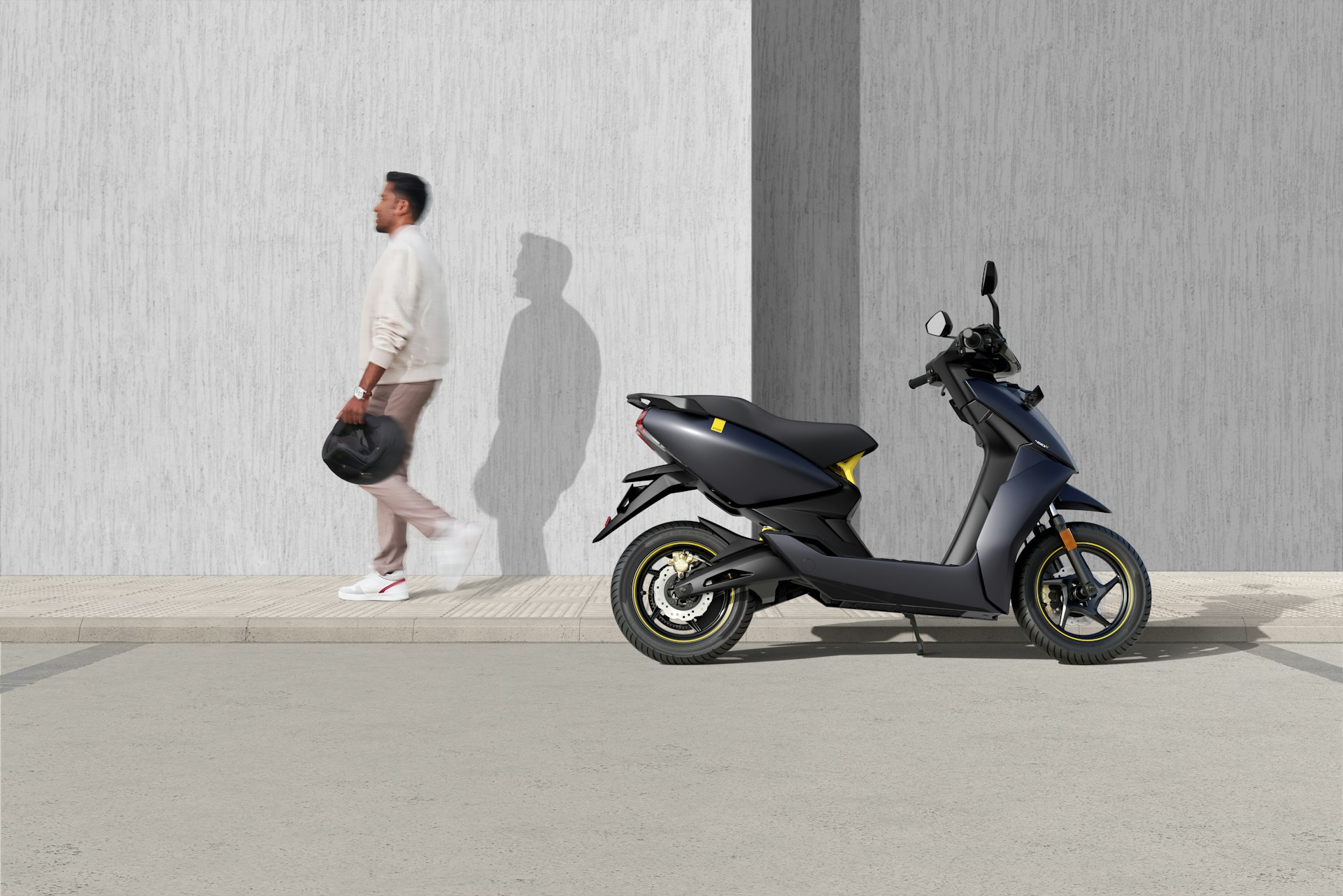
Motor scooters come in various configurations:
| Scooter Type | Engine Size | Description |
| 50cc Scooters | 50cc | Perfect for beginners |
| 125-150cc Scooters | 125-150cc | Mid-range power for city streets |
| 250cc+ Scooters | 250cc+ | Higher speeds suitable for highway use |
| Electric Scooters | Electric motor | Powered by electric motor technology |
| Maxi Scooters | 400cc+ | Large displacement engines; motorcycle-like performance |
| Vintage | Various | Reminiscent of 1960s models |
| Sport | Various | Performance-oriented with aerodynamic styling |
In urban markets, 50cc scooters account for approximately 60% of all sales.
Moped vs Scooter vs Motorcycle Comparison Chart
The main differences between two-wheeled vehicles concern engines, speeds, insurance, and some other factors:
| Feature | Moped | Scooter | Motorcycle |
| Engine Size | 50cc or less | 50cc-650cc+ | 125cc-2000cc+ |
| Top Speed | 28-35 mph | 35-100+ mph | 60-200+ mph |
| Pedals | Yes (traditional) | No | No |
| Transmission | Automatic | Automatic | Manual/Automatic |
| License Required | Varies by state | Driver’s license/Motorcycle license | Motorcycle license |
| Insurance | Basic liability | Standard coverage | Comprehensive coverage |
| Fuel Economy | 80-120 mpg | 60-100 mpg | 30-60 mpg |
| Price Range | $1,000-$3,000 | $2,000-$8,000 | $3,000-$25,000+ |
Total Cost of Ownership
Beyond the average moped price and initial costs, buyers must consider other expenses and calculate depreciation. They include scooter insurance, maintenance, fuel, and registration fees when calculating total ownership expenses.
Resale Value and Depreciation Trends
Different types have varying depreciation rates. For example, street-legal dirt bikes typically hold value that is better than that of standard commuter models.
| Type | Year 1 Depreciation | Year 3 Depreciation | Market Demand |
| New Mopeds | 20-25% | 45-50% | Moderate |
| New Scooters | 15-20% | 35-40% | High |
| Electric Models | 25-30% | 50-55% | Growing |
| Salvage Scooters | N/A | Variable | Limited |
The market for reconditioned vehicle options remains strong, particularly for vintage models. Buyers should verify authenticity using a VIN decoder before purchasing used units.
Theft Risks
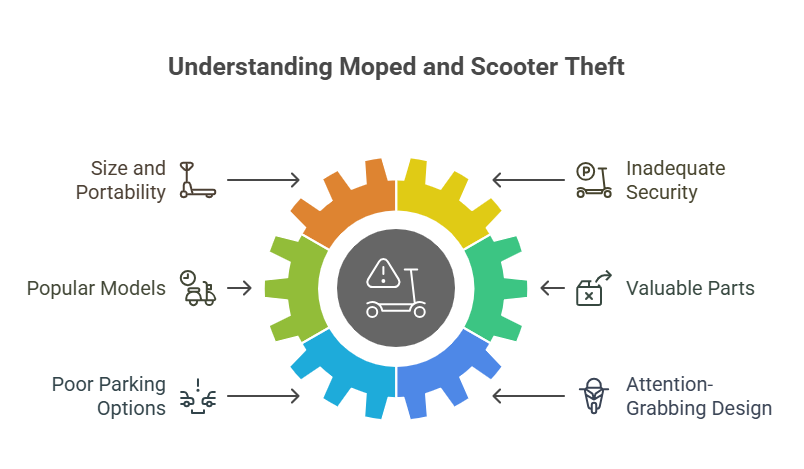
Mopeds and scooters are often stolen because they’re small and easy to move. In cities, thieves take them from places where they aren’t locked up well. Some groups even steal certain models that are popular. Parts like batteries are also common targets, especially on electric bikes and scooters. The risk is higher in areas without good parking options. Scooters that look like motorcycles attract more attention, and many mopeds don’t have strong security. Electric parts are also worth money, which makes them a big reason for theft.
Scooter theft rates are 3.5 times higher than automobile theft rates.
Environmental Impact and Fuel Economy
Mopeds and scooters demonstrate better gas mileage than traditional motor vehicles. This parameter is particularly essential when drawing up title and insurance documents.
| Vehicle Type | CO2 Emissions (g/km) | Fuel Performance | Environmental Score |
| 50cc Moped | 45-55 | 100-120 mpg | Excellent |
| 125cc Scooter | 60-75 | 80-100 mpg | Very Good |
| Electric Scooter | 0 (direct) | 100+ MPGe | Outstanding |
| Electric Bike | 0 (direct) | 150+ MPGe | Outstanding |
Electric motor technology continues advancing. E-bike options are increasingly attractive for environmentally conscious bikers.
Pros and Cons of Buying Mopeds
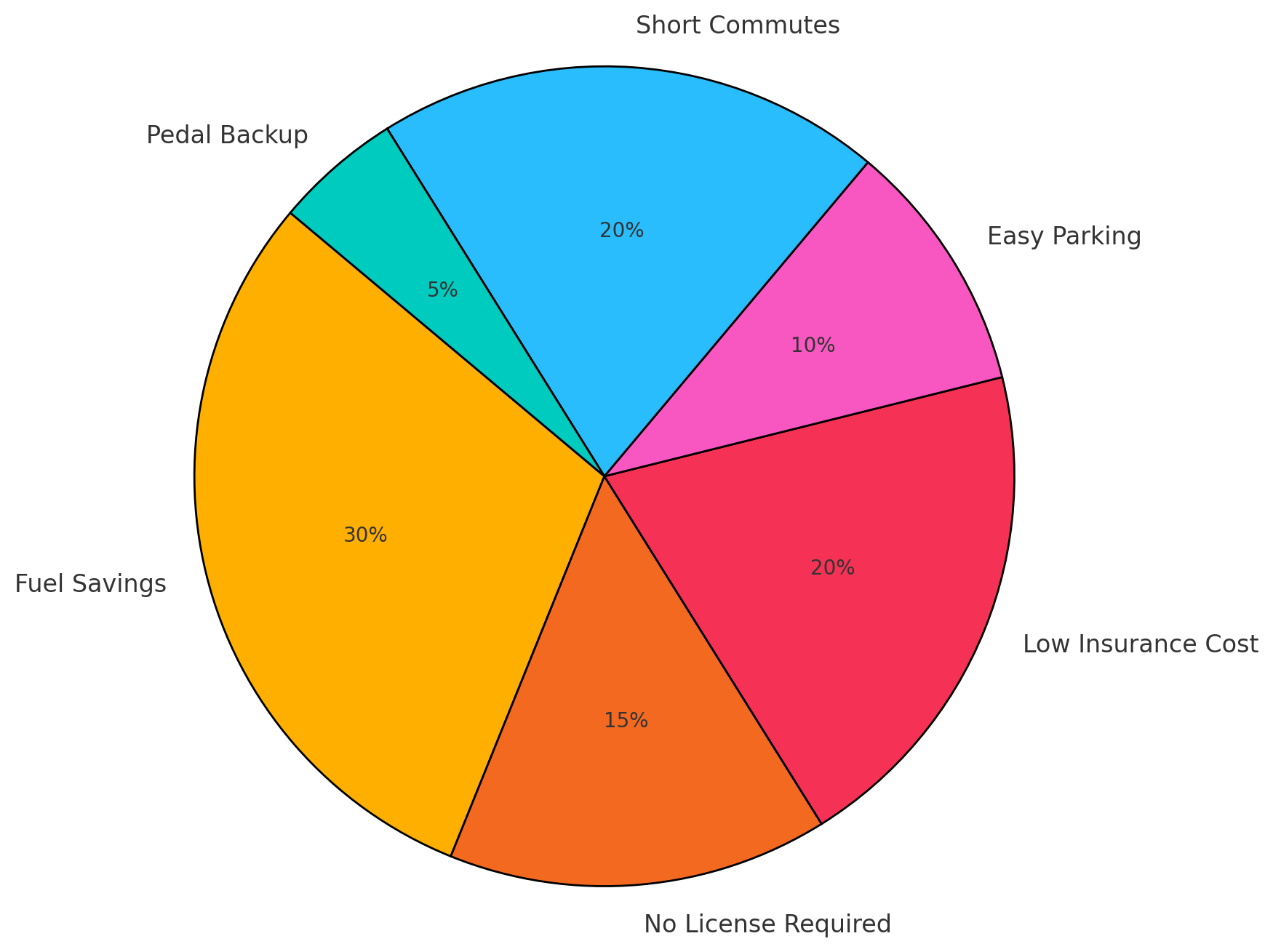
Mopeds offer unique advantages but also come with limitations. Most models provide excellent fuel efficiency but have less performance than other vehicles. Mopeds tend to be ideal for budget-conscious riders seeking basic transportation.
Moped Advantages:
- Exceptional gas mileage reduces operating costs significantly.
- Minimal legal requirements in many jurisdictions – often no license needed.
- Low liability insurance premiums compared to other motor vehicles.
- Easy parking and storage in tight urban spaces.
- Pedal moped options provide backup propulsion when the motor fails.
- Perfect for short distances and local errands within neighborhoods.
Affordable city transport is in high demand. In 2024, mopeds made up 12% of our two-wheeler listings, with most selling within 7 days,” says an analyst at SCA Auctions.
Moped Disadvantages:
- Low-speed limitations restrict highway use and limit route options.
- Limited passenger capacity affects versatility for families.
- Weather exposure affects rider comfort during adverse conditions.
- Small wheels reduce stability compared to larger electric bikes.
- Less performance for climbing hills or riding against headwinds.
- Limited storage space restricts cargo carrying capability.
Pros and Cons of Buying Scooters
A scooter provides more versatility but requires greater investment.
Scooter Benefits:
- Higher speeds enable diverse route options, including highway access.
- Automatic transmissions simplify operation for new riders.
- Built-in storage compartments increase practicality for daily use.
- Weather protection options available through windscreens.
- Can accommodate passengers on properly equipped models.
- Larger engines provide adequate performance for hills and highway merging.
Scooter Drawbacks:
- Higher purchase prices than mopeds increase the initial investment.
- Increased insurance costs (higher speeds and theft threats).
- May require a motorcycle license depending on engine size and local standards.
- More complex maintenance requirements than simple moped systems.
- Higher theft risk due to increased value and desirability.
- Fuel costs are slightly higher due to larger engines.
Common Mistakes First-Time Buyers Make
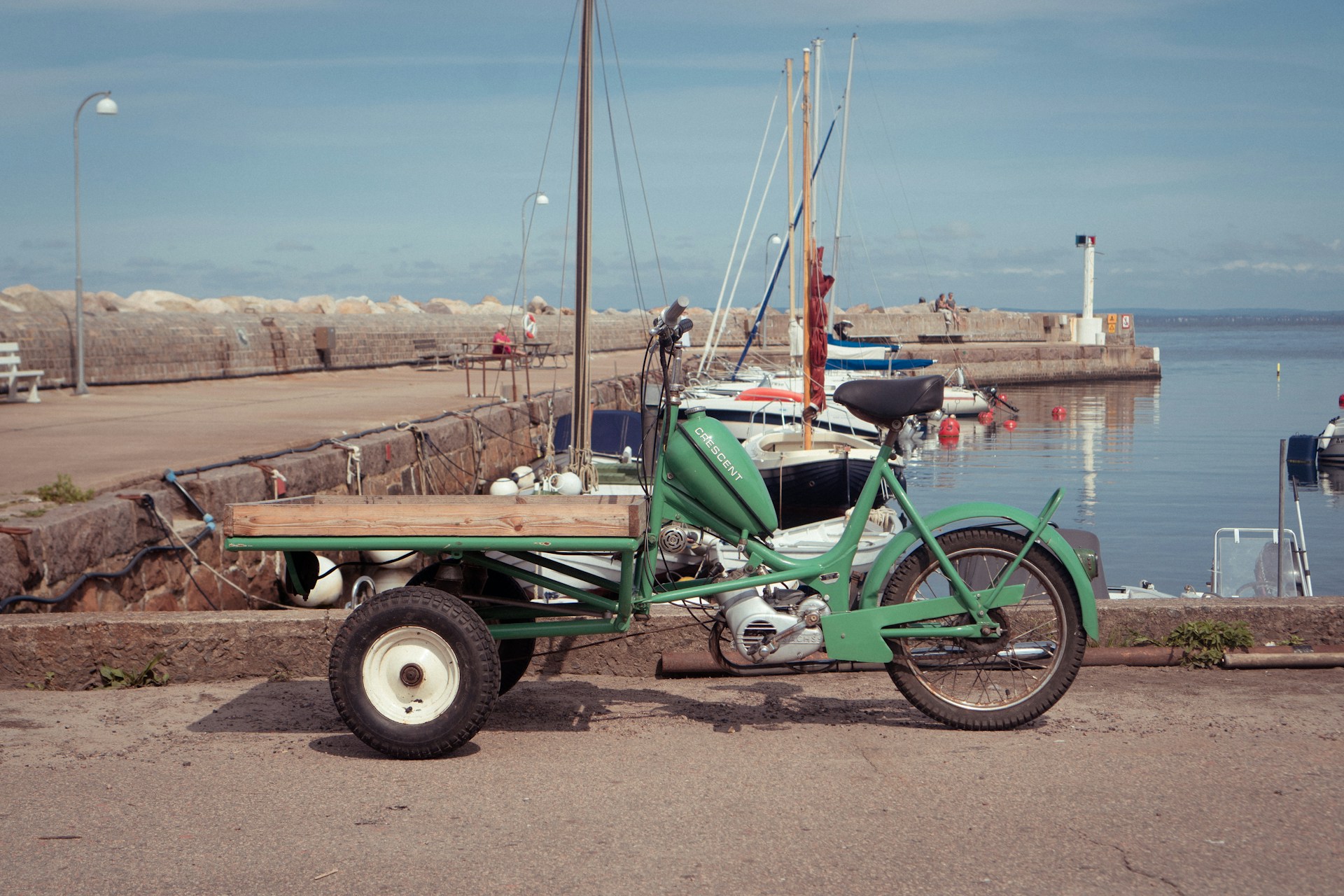
Don’t make the following mistakes:
- Failing to research scooter laws and local regulations in their jurisdiction.
- Underestimating insurance requirements and annual costs for their specific class.
- Choosing an inadequate engine option for the intended use and riding conditions.
- Ignoring safety gear and protective equipment needs and costs.
- Not considering storage and security requirements for their area.
- Overlooking maintenance costs and authorized service availability.
- Buying without test riding different models to assess comfort.
- States require different licensing for various engine sizes – verify local rules.
According to SCA, Insufficient research causes regret in 40% of first-time e-bike and motorcycle buyers.
Safety and Comfort Considerations When Riding Mopeds and Scooters
For these two-wheeled vehicle options, safety should be the primary concern.
| Safety Factor | Moped | Scooter | Importance Level |
| Helmet Required | Varies by state | Yes (most states) | Critical |
| Visibility Gear | Recommended | Essential | High |
| Rear Brake Performance | Basic | Advanced | Medium |
| Weather Protection | Minimal | Moderate | Medium |
| Stability | Lower (small wheels) | Higher | High |
| Stopping Distance | Longer | Shorter | Critical |
Valid license requirements and liability insurance obligations vary significantly between jurisdictions. Most states require compliance with individual rules.
Summary
The differences between a moped and a scooter are the factors to review when planning a purchase. The choice depends on individual needs, budget, and intended use. Mopeds are suitable for short commutes. They show maximum fuel efficiency. Scooters offer greater versatility and performance. Legal requirements, insurance costs, and safety factors are also essential indicators to analyze. Additionally, consider reconditioned vehicle standards.
FAQ
How Many Miles Per Gallon Does a Moped Get?
Mopeds deliver exceptional fuel economy, and the difference is apparent. Gas mileage varies, depending on the engine, riding conditions, and maintenance.
50cc models: Under normal riding conditions – 80-100 mpg.
Electric bicycles: 100+ MPGe equivalent with modern battery technology.
Pedal-assist models: 120+ mpg.
What Is the Top Speed of a Scooter?
The engine and design determine scooters’ top speeds. 50cc models typically reach speeds of 35-40 mph. In larger engines, speed can exceed 100 mph.
Can Someone Sit on the Back of a Moped?
Most models are designed only for single riders. However, some larger electric bikes can accommodate passengers.
Can I Ride a Moped with a Suspended License?
License requirements for moped operation vary. Some areas allow moped operation without a standard driver’s license. Others maintain strict requirements.
Some states: No license required.
Other states: Valid driver’s license.
Suspended license: Usually prohibits riding.
Are Scooters or Mopeds Allowed on Sidewalks?
Neither vehicles are permitted on sidewalks.


